There’s no getting around it: the 2020 Volkswagen Atlas Cross Sport is a calculated business move. And there’s nothing wrong with that.
VW has seen the tide-change that’s sweeping across both America and Canada. The majority of its sales in the US last year weren’t from the iconic Golf, or the refreshed Passat. No, 53 percent of the brand’s total sales were SUVs, despite only having two in its lineup: the Tiguan and the Atlas, the latter of which is designed for (and built in) America.
SEE ALSO: 2020 Volkswagen Passat R-Line Review
Since Volkswagen introduced the larger, three-row Atlas to its lineup, it’s watched average transaction prices soar by nearly $4,000. That sort of cash injection is pretty darn appealing, and the Cross Sport has arrived to maintain that upward trajectory. It targets a slightly different niche, nixing the third row and adopting a more rakish profile. The result is a trucklet that doesn’t feel much different from behind the wheel, but slots the Atlas into a more premium pocket of the very crowded mid-size five-seater SUV crowd.
Cross out the third row
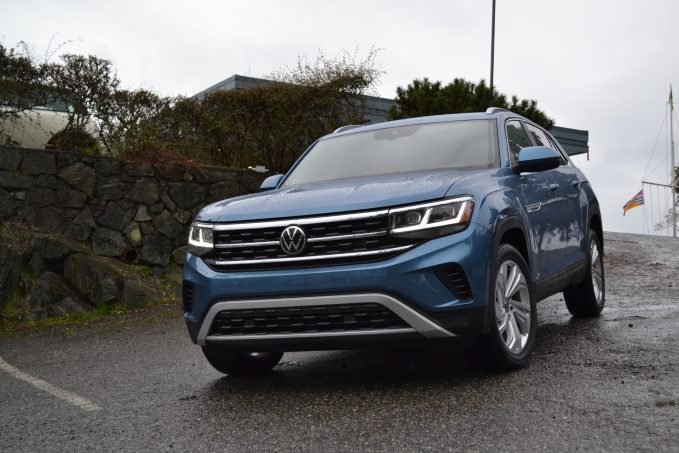
The Atlas has gone to the gym to transform into the Cross Sport. Up front is a new, more angular nose, sharing its general headlight/grille shape with the Jetta and Passat. Below the greenhouse, the Cross Sport is identical to the regular Atlas from the front doors through to just behind the rear wheel arch. Beyond that, the tail is some five inches shorter, with a sharper rake to the rear glass to boot. Volkswagen has also lightly shaved the greenhouse height, with a more aggressive tumblehome — the narrowing of the bodywork — towards the tail too. It’s pronounced enough that the Cross Sport needs to use different roof rails than its more upright sibling.
Mercifully, not a single Volkswagen rep once refers to it as a coupe during the launch event in British Columbia.
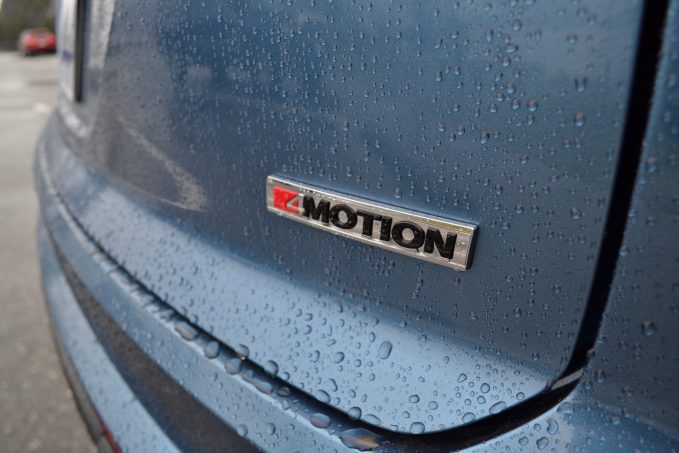
The more muscular look is a welcome one. The proportions –give it real presence, especially on the larger, optional 21-inch wheels. The Atlas’ character line still runs over both wheel arches, but now aligns with the leading edge of the taillights. It’s my favorite part of the design.
The chopped length makes sense with the deletion of the third row, but the back-seat passengers benefit here. The CS mounts its second row some three inches further back, giving it proper stretch-out room for adults. Head room slightly suffers, to the tune of an inch or so, but unless you’re folding NBA players in back there, there should be no complaints.
Trunk space is also vast thanks to the third pew’s absence, at 40.3 cubic feet. The Atlas’ load floor is wide and flat, and while the second-row seats don’t fold quite flush, they don’t leave any annoying humps. Drop ’em for a huge 77.8 cubes.
Two familiar engine choices
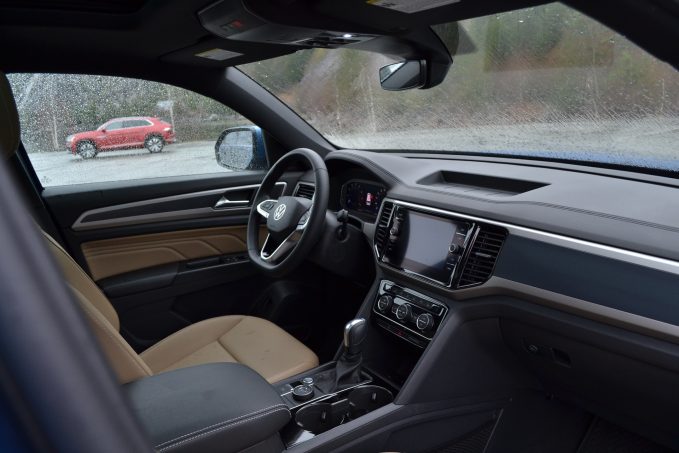
Volkswagen hasn’t messed with the drivetrain for the Atlas Cross Sport. Just like the original, the CS offers a choice of front- or all-wheel drive, with a turbo 2.0-liter inline-four or naturally-aspirated 3.6-liter V6 available. The only transmission is an eight-speed auto.
I was able to sample both engine options on the short driving route, which took us out of Vancouver and north to Whistler. Starting out in the 235 hp turbo four-pot, the Atlas moved along well enough, with its 258 lb-ft torque peak coming in nice and low. The transmission would occasionally hunt for the right ratio at city speeds however, especially when the landscape threw an incline its way.
The V6 model felt slightly quicker, as one would expect with outputs of 276 hp and 266 lb-ft. It did need more revs to do so, though the quicker throttle response and throaty VR6 rumble meant that was hardly a chore.
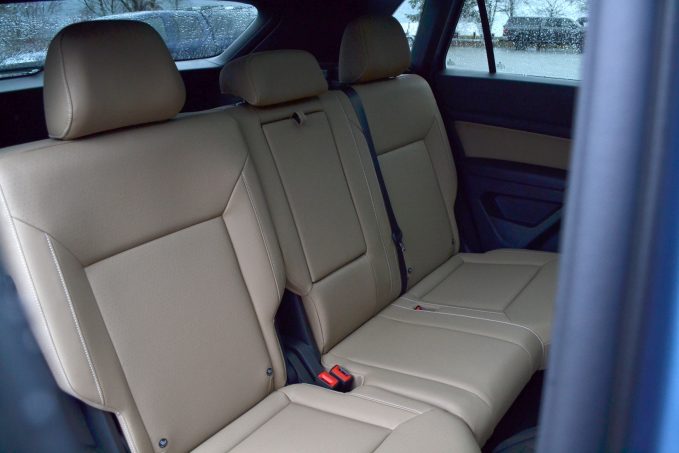
Fuel mileage is, at least according to the EPA, slightly worse with the 3.6-liter. We’re talking a combined 19 mpg for the all-wheel drive model (16 mpg city, 22 mpg highway), compared to 20 mpg for the smaller engine (18/23 mpg). The V6 can also tow up to 5,000 lb versus the 2,000 lb rating of the turbo. It costs $1,400 more too, so if you don’t regularly tow and can live without the lustier soundtrack of the six-pot, maybe stick with the four-cylinder.
No matter which engine is underhood, the Atlas drives as you’d expect a roughly two-ton SUV to drive. The steering is light, and the blocky nose makes it easy to place on the road. The suspension is quite soft, soaking up bumps and — rightly — prioritizing rider comfort over handling prowess. It feels smaller than its dimensions would suggest, though you’re always acutely aware of how wide it is.
A solid interior with few surprises
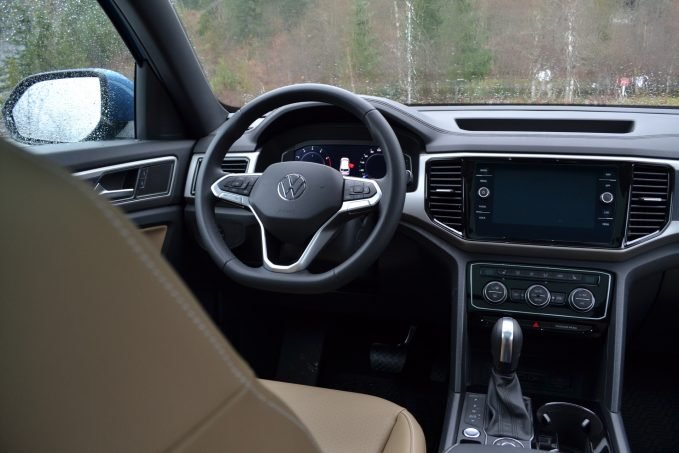
The inside of the Atlas Cross Sport is typical VW. If you’ve sat in the original Atlas you’ll recognize the dash design. A 6.5-inch touchscreen sits in the center in the entry-level S trim, with the 8.0-inch unit present in all others. It’s a straight-forward interface, with both Android Auto and Apple CarPlay functionality. There’s also a good amount of physical buttons in the console and on the wheel to take care of simpler tasks.
Volkswagen’s Digital Cockpit is standard on the SEL trim and above. The dials are crisp and easy to read, and the ability to pin things like navigation front and center is most welcome.
While a more extrovert red leather interior is available, my testers for the day come with either beige or black trim. The seats are mega comfy in either row, with room to really stretch out in the back. Interior trim quality is generally pretty good, though plastics lower down on the dash feel cheap.
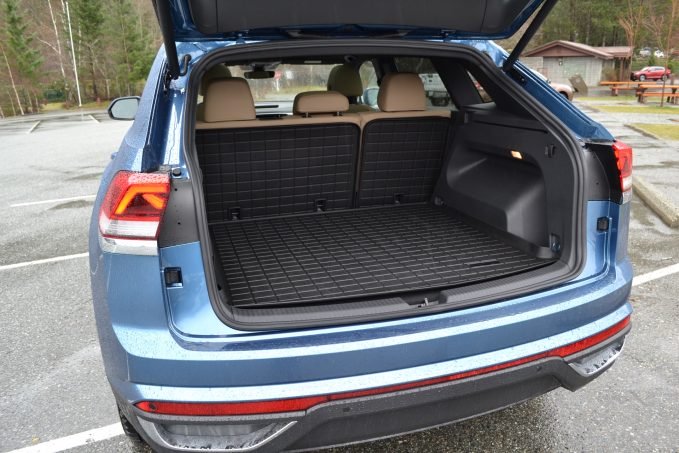
Standard kit is solid, including heated adjustable mirrors, rain-sensing wipers, auto headlights and blind spot monitoring on all trims. The SE adds heated front seats, keyless entry, two-zone climate control, leather-wrapped steering wheel, and a powered liftgate. SE interiors are faux leather, whereas the base S is cloth. Moving to the top-shelf SEL nets a memory function for the driver’s seat, a full leather interior, traffic jam assist, road sign recognition, and lane keep assist.
An available R-Line trim is available on the SE, SE Tech, SEL and SEL Premium. It adds more aggressive front and rear bumpers, stainless steel pedals, and, on the SEL versions, 21-inch wheels.
Verdict: 2020 Volkswagen Atlas Cross Sport First Drive Review
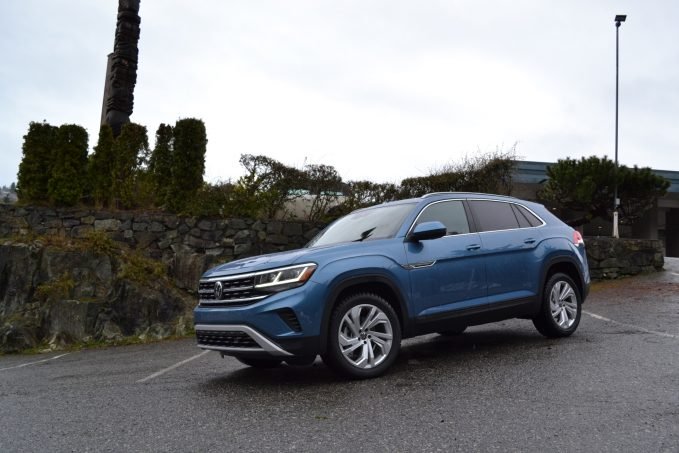
And so we come to costs. Prices start at a reasonable $31,565 for a 2.0-liter front-drive model, including $1,020 in destination. Prices top out a little over $50k for a loaded all-wheel drive VR6-powered model. That puts it at the higher end of the class, but the Atlas does come with a powerful — if thirsty — base engine. It gives VW a direct competitor against the Jeep Grand Cherokee, Ford Edge, Honda Passport and, if we think laterally, the Subaru Outback. That’s a segment covering over 600,000 sales a year in the US.
The Atlas Cross Sport doesn’t rewrite the playbook for mid-size crossovers. It doesn’t aim to either. What it does is fill a gap in VW’s fledgling SUV lineup. The CS is for those that want more space without a set of barely-used seats taking it up. It’s good looking, practical, user friendly, and a comfortable mile-muncher. It will undoubtedly sell well, ratcheting up the SUV share of VW’s sales figures even more.


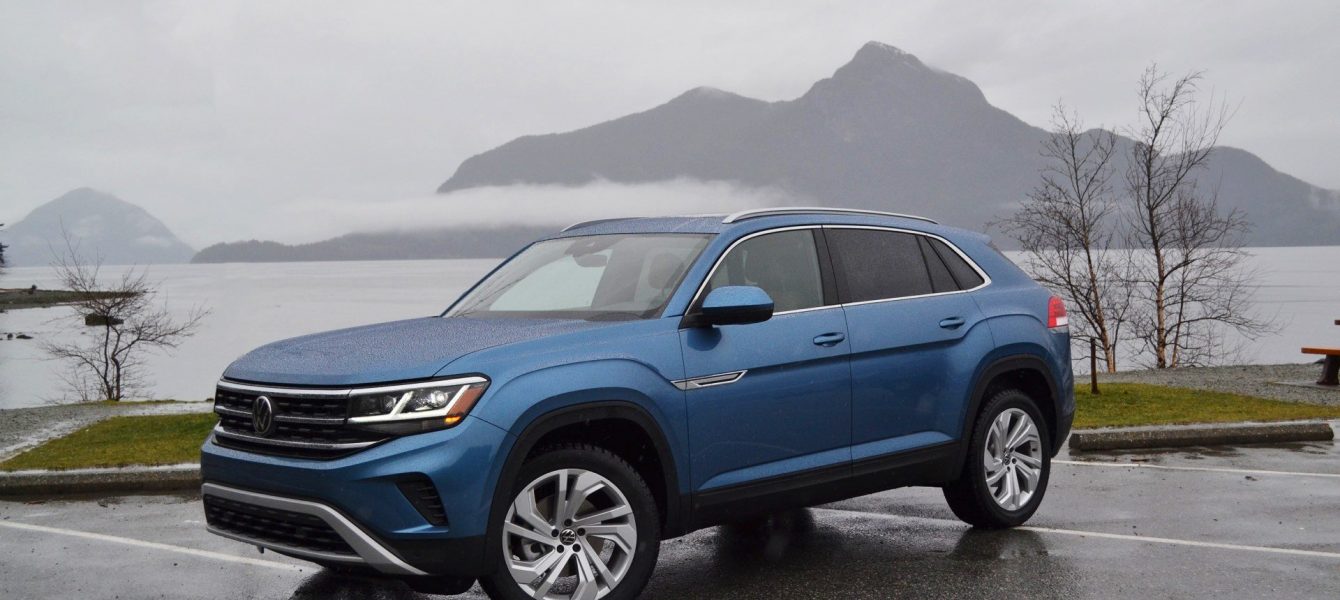
Leave a Reply